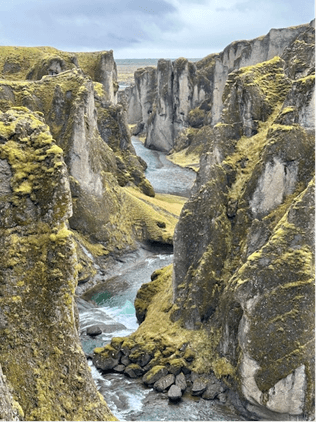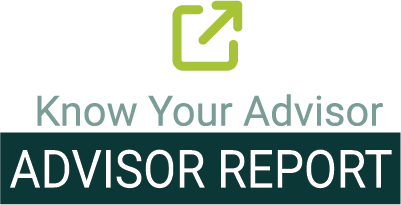Iceland's Lessons
When the Vikings pillaged the coasts of Scotland, England, and Europe, legend says they took the most beautiful women back to Iceland to be their wives. Modern Icelanders say this is why the tiny country has the most attractive people in Europe.
I travelled to Iceland earlier this month. It is a tiny country, and the people are wonderful. The most attractive in Europe? They think so!
Iceland, the country, is exactly the same size as the island of Newfoundland, Canada’s easternmost province. Iceland, however, has just 390,000 people compared to Newfoundland’s 520,000.
Barely the number living in most mid-sized cities in North America.
Why so few? The country is a geological potboiler, with 33 volcanoes, 5 glaciers, and almost no trees. Much of the land is ice sheets or mangled plains of ancient (and recent) lava. Little is flat and arable. What can be farmed loses its topsoil to the raging winds.

One fellow we met told of a friend who planted 30,000 tree seedlings. Just 13 survived. Welcome to the Arctic.
Financial Earthquake
Iceland was once a tiny European backwater that few paid much attention to. Its main industries were fishing and more fishing, with a little tourism thrown in.
Until the start of the 2000s. As interest rates fell worldwide and money sluiced around the world, thirsting for any rate above zero, some of it washed up on the shores of Iceland due to its higher interest rates. Why were rates high in Iceland?
It is a small island with volcanoes! And when volcano meets house, volcano wins.
Real estate prices exploded in the two major cities, as the three main banks took in almost 10 times Iceland’s GDP in deposits. How high is this?
Canada’s bank assets are about 2.5 times our GDP and the U.S. bank assets are just 1.1 times.
So, yes, it was very high.
The banks then lent this money out as fast as they could, to anyone who wanted a loan. Every possible plot of real estate, from houses to office buildings and hotels, got easy loans. Anyone owning dirt in Iceland - or lava - made a killing.
By 2005, Icelanders, on a GDP/capital basis, were richer than almost every nation in Europe (World Bank). It came with a price. Inflation raged as high as 14% in 2008, with all the money pouring in.
As Ben Stein once said, “Something that cannot go on forever won’t.”
Once everything in Iceland had been mortgaged or levered, the banks started plowing deposit money into subprime loans offshore. We know how that ended.
In October 2008, Lehman Brothers defaulted and the global monetary party came to a screeching halt. European investors happily earning 8% in Icelandic krona savings accounts (CEIC data) suddenly realized there was a problem and raced to withdraw their money.
The banks found themselves in an investment vice. They were paying 8% on savings accounts but the mortgages they lent out had terms measured in years. And they were defaulting. All three banks went bankrupt within months. Property prices fell and the stock market declined over 70%.
Unequal Deposit Insurance
- seized the bankrupt bank assets to try to recover any value it could
- subsidized homeowners who were underwater
- devalued the currency, the krona, by 50%
- took an emergency loan from the International Monetary Fund
- raised taxes
- limited how much money could leave the country
The Road Taken
Iceland’s severe handling of its banking crisis – layoffs, bank seizures, debt default on debt, currency devaluation –- was exactly the opposite of how the rest of the world handled their own banking crises years earlier. Japan, Canada, Europe, and the United States all slashed interest rates and propped up banks with injections of money. No bank presidents went to jail.
In the end, which was the better path – the kick-the-can-down-the-road approach of the world at large, or the take-the-bitter-medicine path of Iceland?
In the short term, Iceland’s unemployment hit 8% as interest rates spiked (Macrotrends). Taxes squeezed workers and banks were hit with special levies to pay for their losses. The country struggled to pay back the IMF loan.
But…Iceland recovered faster than expected. By 2015, Iceland paid its IMF loan early. Interest rates fell and the economy rebounded. Tourism surged due to the cheap krona and banks were far more prudent.
In fact, because Iceland wrote down its bad loans, jailed imprudent bankers, and allowed industries to downsize and adapt, the country ended up with far less debt. Iceland today has half our debt levels. Its debt/GDP is just 59% versus Canada’s 110% and the USA’s 123% (Trading Economics).
This paved the way for the new tourism boom, which had erupted from…another eruption.
The Land of Fire and Ice

If the god Odin wanted to punish Iceland when it was down, he could not have hammered it harder than the Eyjafjallajökull volcano in 2010.
Long dormant, the volcano sprang to life beneath a glacier. Two geological calamities happened at once.
- First, so much volcanic ash was released that all flights to Europe had to be cancelled or diverted for months. It was enough to cut economic growth and send stock markets into a slump.
- And second, a mile of glacier melted as lava boiled underneath, flooding towns and roads.
The world watched Iceland melt, financially and geologically. If Europeans were angry about their deposits, they were even angrier about their clogged airspace.

To locals, it was devastating. To geologists and internet watchers, it was fascinating. More importantly, the geologic ‘disease’ was the beginning of the ‘cure’ for the financial meltdown.
The millions of people that watched the volcano erupt beneath a glacier suddenly wanted to visit this mysterious and dangerous place. Tourism surged from 300,000 per year to over 2.2 million per year today (Keflavík Airport data), giving the country a new income source beyond fishing.
Geothermal energy was suddenly a gift staring them in the face. A major asset, it was harnessed to provide Iceland with some of the cheapest electricity rates in the world.
Icelandic water is known as some of the purest anywhere. Exports - thanks to the melting glaciers - are now growing at 20% per year (OEC data).
I had the opportunity to meet the president of the Nasdaq Iceland stock exchange on the trip. Nasdaq bought the exchange when it was struggling in 2010, and it now boasts 31 companies.
Most are based on fishing and banking, but technology, biotech, and tourism are the fastest growing sectors. Iceland Air, the airline that brings the most people to Iceland, is now one of its largest listings.

Iceland's Lessons
To most global bankers, the cure for debt is more debt. Almost every country today with bank problems has lent even more money and lowered interest rates to ease the pain of servicing these debts. Which really means deferring the debt.
Iceland taught us that:
- Too much debt is deadly. It almost sank Iceland through the bankruptcy of its three major banks. After much pain, Iceland’s debt today is modest and manageable.
- After its sharp decline, Iceland has grown at 3.5% per year since 2015. This compares to Canada at 1.5% and the U.S at 2% (World Bank data). The painful path may be the fastest path back to growth.
- If you are going to borrow as a nation, borrow in your own currency. Iceland borrowed in krona and was able to devalue it by 50%, cutting its effective debt load. Yes, it was harsh on the lenders but it saved the country. If Iceland had borrowed in euros or dollars, as many Asian nations did in 1997, they would still be paying it back.
- You must play the cards you are dealt. Iceland’s advantages are natural wonders, such as volcanoes and glaciers that are fun to watch from a distance. It has tourism, cheap power, and the cleanest water in the world, all of which it is using to grow its economy. Canada’s cards are energy and minerals. Our new government recognizes these as our strong cards to prosperity and continued independence from the U.S.
Iceland is a fascinating country. Its turbulent history is even more fascinating.

Market
The market seems to have decided the worst is behind us. Can companies absorb 20% tariffs? Stocks seem to think so.
The tariff tsunami has been downgraded to a tariff tiff. Deals struck with the U.K. and China are paving the way to scores of others.
Not as bad as feared, in other words.
However, it leaves valuations stuck in no-man’s land. Stocks got somewhat inexpensive after “Liberation Day” was announced April 2nd, which sent U.S. markets to their worst decline since 2022. We picked up a few bargains in our managed portfolios, but the rebound was fast and furious.
Energy, pharmaceuticals, and telecoms appear to offer the best values today. However, governments want prices of all three lower. This means they may remain in the doghouse for the time being.
Online Safety
Willie Sutton, the famous bank robber, said he robbed banks because “that’s where the money is.”
Aside from a few jewelry heists that gain media attention, there are fewer and fewer bank robberies anymore. Banks just don’t carry that much cash. So, where are the criminals today?
Online.
Cybercrime has tripled from $3 trillion in 2015 to $9.5 trillion in 2024 (Cybersecurity Ventures). Everything from romance scams to ransomware and ID theft happen every day. We have had clients nicked for a few thousand to even more, and these are smart “with it” people. An elderly client at CIBC was recently robbed of $700,000 when he moved money from a maturing GIC to a better rate on a fake website.
Raymond James spends between $50 million and $100 million per year to protect your data from malware and cyber-attacks. Our technology department routinely targets us with fake e-mails and websites to test our vigilance. We may not catch them all but we are certainly on guard and on watch for clues to look for scams.
We are increasingly wary of artificial intelligence being used to mimic client voices in voicemail requests, which is a new vector of criminal attack. Don’t be surprised if, in the future, we ask for a special code word that an AI won’t know but you and we will.
If you ever find yourself in a situation where you are being pressured to send money, take a deep breath and pause. Call us to ask if it is real. Our cybersecurity team may be able to spot if it is a scam or not.





